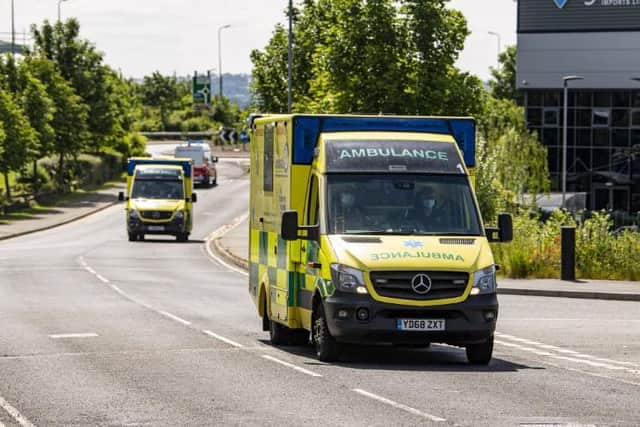Reducing hospital handover delays is Yorkshire Ambulance Service's 'highest priority'
Up to 160,000 may have come to harm, including 12,000 who could have suffered serious harm, according to analysis by the Association of Ambulance Chief Executives (AACE).
The AACE studied handover delays lasting more than an hour that occurred across the 10 ambulance trusts on January 4, and found just under half (48 per cent) of the Yorkshire Ambulance Service (YAS) patients had experienced some level of harm - but none were at risk of suffering long-term or permanent damage.
Advertisement
Hide AdAdvertisement
Hide AdThat was the lowest percentage recorded by an ambulance trust that day, when all of the patients who waited at least an hour to be handed over by East of England Ambulance Service, London Ambulance Service and South East Coast Ambulance Service were found to be at risk of harm.


The report also states YAS recorded the shortest average waiting time of 1 hour and 43 minutes, while the longest wait recorded that day by a trust was 7 hours and 47 minutes.
Nick Smith, executive director of operations at YAS, said the report “highlights a very important issue” that “we continue to address as one of our highest priorities”.
“We know that handover delays at hospitals must be minimised to improve patient care and experience, as well as reduce waiting times for those needing an emergency ambulance response in our communities.
Advertisement
Hide AdAdvertisement
Hide Ad“However, we also acknowledge that with the increased demand for services across urgent and emergency care, staff are already working extremely hard and continue to face significant system-wide capacity challenges.
“We continue to work closely with the region’s Integrated Care Systems (ICSs) and hospital colleagues to address the handover issues.”
It comes amid growing concerns about the strain that will be placed on NHS services over the winter, as they work to deal with rising demand and an expected influx of Covid cases.
National guidance states that paramedics should be able to hand patients over to A&E staff within 15 minutes of arriving at hospital.
Advertisement
Hide AdAdvertisement
Hide AdBut the AACE said that since April 2018, an average of 190,000 handovers have missed this target every month, accounting for around half of all handovers.
In October, NHS leaders stepped in and ordered hospital bosses to “eliminate” ambulance queues outside hospitals.
NHS bosses in England have also written to trust leaders to highlight the “risk to patient safety” after two deaths were linked to handover delays.
NHS data shows YAS’ average response time in October for category one incidents, classed as immediately life-threatening, was 12 minutes and 15 seconds, and for category two incidents, which covers emergencies such as heart attacks and strokes, it was 43 minutes and 40 seconds.
It was also found to have a longer average 999 call response time (166 seconds) than any other ambulance trust in the country.
